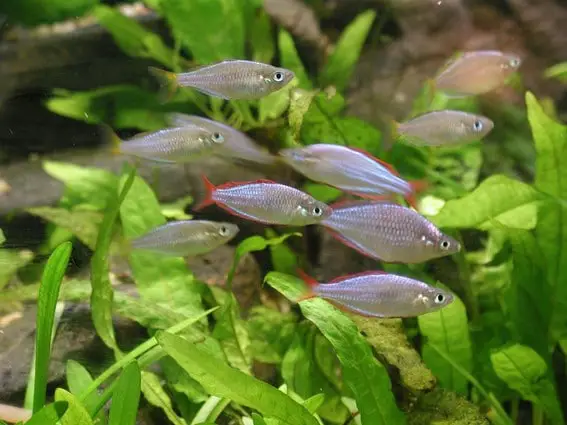Usually, people with aquariums in their home aim to create a beautiful display that acts as a living piece of home decor, or it is a hobby due to an interest in fish. Either way, when designing an aquarium there are many things to consider such as where to place the tank, the equipment required, and how to create a natural environment, so the fish can survive.

One of the most important components of an aquarium is aquatic plants that provide much more than just a natural look to an aquarium and are vital for creating and upkeep healthy conditions for your fish to thrive in.
There are several common varieties of aquarium plants that come in different colors, sizes, and shapes. Some examples include the Amazon sword, hornwort, Indian waterweed, java fern, moneywort, and pygmy chain sword.
Despite the vast range of aquarium plants available, they all provide similar benefits for the well-being of your fish, which you can read more about below.
Plants Reduce Algae Growth
One of the biggest challenges in maintaining clean water in your aquarium is the growth of algae, which can become relentless if not managed properly. According to this article, there are several ways to combat algae growth including regular cleaning, using sponge filters, and introducing certain species of aquatic plants. Algae survive on nutrients such as iron, nitrates, and potassium in the water, so removing these elements is key to managing algae growth.
Aquarium plants require the same nutrients as algae and can work in conjunction with regular cleaning and a water filter to starve algae out. However, the aquatic plants that are most effective at removing nutrients are faster-growing plants, whilst other slow-growing plants will struggle to fight algae problems.
They Oxygenate the Water
Aquarium plants are no different from land plants when it comes to photosynthesis, although instead of releasing oxygen into the air, they also help to oxygenate the water in addition to absorbing carbon dioxide.
Maintaining oxygenated water is vital for the survival of aquarium fish which can be achieved by using water pumps and air stones, however, to ensure the water is saturated naturally with oxygen you will need plenty of plants.
They Recreate a Natural Habitat
Many species of fish commonly found in aquariums originate from natural habitats in lakes, rivers, and streams, so when creating your aquarium it is worth researching which plants are typically found in your fish’s natural environment.
Keeping fish should be much more than storing them in a glass box for people to stare at every so often, and fortunately, most aquarium keepers take a lot of time to not only make something that looks beautiful but also to recreate conditions found in the wild. They achieve this by adding plants that live at different levels in the tank, with plants with long roots useful for holding the floor of the tank together whilst others live on the surface to give some shade.
Some Fish Like to Shelter in Plants
Different species of fish have different traits, some fish can be more aggressive and territorial, whilst others are much shyer. For fish that are territorial, they may become stressed and repeatedly patrol the tank if there are not enough plants for them than to hide and rest in. Other fish that are shy, also need plants for shelter, so they feel more secure, especially if other fish in the tank are bigger.
Aquarium plants are also essential if your fish are breeding, as the safety of the plants acts as a natural nursery for fish to lay eggs in.
The Substrate is More Stable
If you have a filter or fish that likes to move the gravel around then the substrate or bottom of your tank can become loose leading to the water becoming cloudy and dirty. This can be tackled by adding plants with long and strong root systems that are capable of holding the substrate together.
A strong root system helps with anaerobic processes and can hold the different elements of your aquarium together including pebbles, rocks, and driftwood.
A Renewable Food Source
Some aquarium plants are edible and can provide your fish with a natural source of food and nutrients that they may not get from store-bought fish food. Even though your plants may not look aesthetically pleasing after being munched on, they are likely to grow back quickly and should always be a good snack for your fish.
An aquarium can be an interesting centerpiece of any room, however, an aquarium keeper must ensure their fish are healthy and happy. Often this can be done by adding plants to recreate a natural habitat, which of course has multiple benefits for the well-being of the fish.
